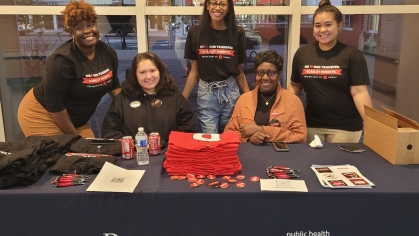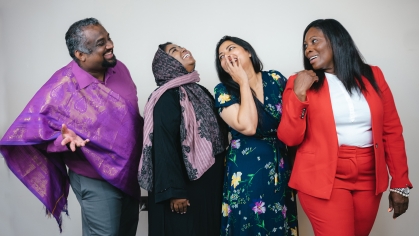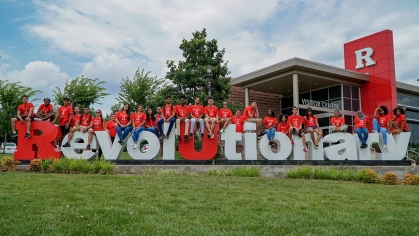How the Persian Culture Club Began at Rutgers University—And Continues to this Day
In May 1988, Mahtab Hariri and Mehrdad Rahimi, two Iranian citizens studying on student visas at the Ernest Mario School of Pharmacy, met in a pharmaceutical marketing class. At the time, Iranians living in the United States were suffering from a variety of different stressors: the 1979 Islamic Revolution had forced many to flee their country, the relationship between the U.S. and Iran had been unstable since the 1981 hostage crisis, and the Iran-Iraq war had devastated Iran and its people.
In this context, the pair soon founded the Rutgers University Iranian Cultural Club (RUICC) as one of many clubs in the Division of Student Affairs, aiming to fill the need for Iranian community and identity at Rutgers University–New Brunswick.
“We wanted to keep Iranian culture alive,” said Rahimi. “And, with that, we wanted to both introduce Iranian culture to half-Iranians or Iranians born in America and to show other students that Iranians were not as they had been depicted in American news media.”
“It was not just about culture,” Hariri added. “It was also about our dignified Persian identity, which was being defamed both in our homeland and in our new land. Personally, as an Iranian woman, I felt that I needed to do much more than other women to simply be me, and that the misrepresentations of Iranian women hurt everything about us, including our gender, our ethnicities, our humanitarian values, and our international image.”
The pair were soon pinning posters on bulletin boards around campus and recruiting potential members. Given the difficult political atmosphere surrounding Iran, as well as the inherent divisiveness of politics, they founded the RUICC as an explicitly apolitical group.
“Anything that gets political gets out of control,” said Rahimi. “It’s hard to keep people together because they start arguing, so we decided to keep it explicitly cultural. After all, people might not agree on their politics, but everyone can agree on the date of Persian New Year.”
Generally, the club thus aimed to promote Persian culture and identity, especially the multifaceted identities of Persian women. Under the leadership of Hariri, who was known as “Madam President” in early years of the RUICC, female students played key roles in planning and executing club events.
“Mahtab had a lot of good ideas and needed people to help her out,” said Mina Ghajar, an early member of the club who now works as a librarian at Rutgers-RBHS-Newark. “As a woman, I was happy to help her mobilize the girls, get them into the club, and do a lot of the legwork for the events.”
After a slow start, the club soon attracted new members, many of whom were not part of the undergraduate population at Rutgers. Graduate students, faculty members, parents, and even students from other colleges in the tri-state area attended club events that included hang-out sessions at local Dunkin’ Donuts or McDonalds, home gatherings, or “Mehmooni,” that featured authentic Persian food, karaoke nights, performances by visiting poets or musicians, and bigger celebrations for cultural touchstones like Nowruz, the Persian New Year, or Mehregan, the Persian Harvest Festival.
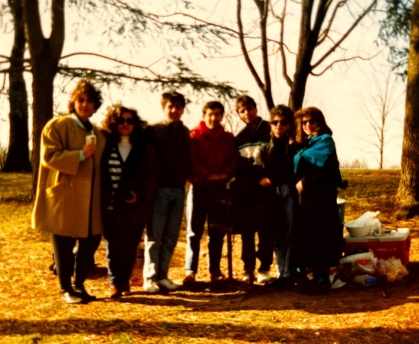
“We had a lot of picnics, outdoor gatherings, and hiking,” Hariri recalled. “Everybody would bring food or Persian tea, and the boys would play soccer together or make kabobs. Many students would bring their parents to those events, and some of our parents made a lot of new friends through the club’s community.”
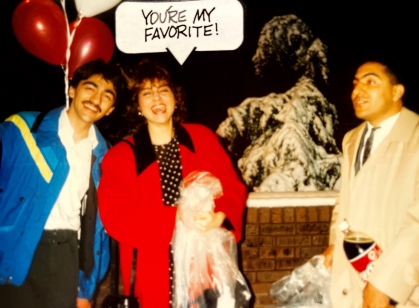
In fact, many members and parents formed lifelong friendships and relationships with others, and some, like Hariri, who founded a nonprofit foundation focused on empowering women, still credit the club for teaching them key lessons about identity, teamwork, creativity, and self-expression.
Then, about two years after Hariri and Rahimi started the club, disaster struck. In 1990, the Manjil-Rudbar earthquake struck a densely populated region in the northwest of Iran, killing approximately 40,000 people and leaving more than 500,000 homeless.
“The earthquake happened near the Caspian Sea, in an area where my father is from,” Hariri said. “Initially, the project started out as a college-student joke referring to my ethnic region ‘collapsing,’ but it soon became our mission to see how we could help the victims, because it was a truly sad post-war disaster.”
The club’s first actions emerged from a conversation that one of its members, Mehran Ardebili, a physics student at Princeton University, had with Ali Nejad, a Persian rug shop owner in Princeton. Nejad suggested that the RUICC ask Persian rug dealers in New York City for rug donations, then sell those donated rugs to raise funds.
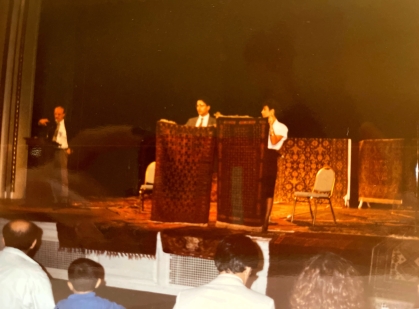
With the credibility of Nejad, who had offered to store the rugs, as well as that of the club’s treasurer, Saeed Salehi, club members began soliciting donations from shop owners in New York.
“My father was a rug exporter in Iran, and my brother was a rug importer in Switzerland,” said Salehi, who later married Hariri. “A lot of people in the Persian rug community knew my father and brother, and I helped leverage that into trust for what we were doing.”
Soon enough, the RUICC had plenty of rugs, as well as the aid of Sotheby’s, an auction house in New York city that offered to facilitate an auction for free. The event itself raised approximately $40,000, a sum equivalent to about $90,000 today. Though club members now recognize the scale of their accomplishment, it failed to impress them at the time.
“It didn’t seem like the event was well-attended or that much money had been collected,” Hariri said. “We were not that happy or proud of ourselves and didn’t think that we had accomplished much at all.”
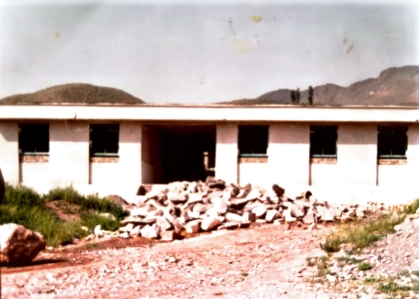
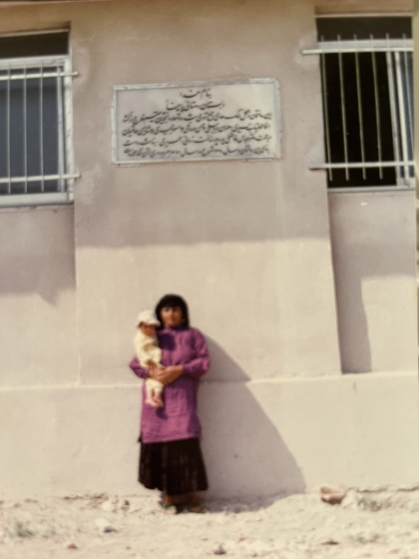
Still, now that they had raised some funds, the club searched for ways to help Iranians affected by the earthquake. Suspicious of the Iranian government and unwilling to pay the fees associated with traditional charities like the Red Cross, the RUICC settled on using the United Nations to help disburse the funds.
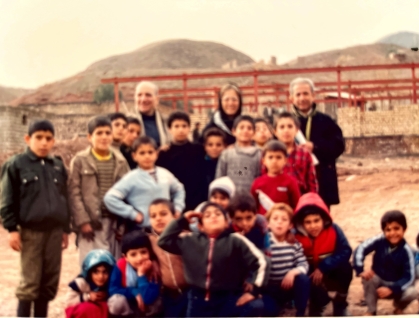
The United Nations, in conjunction with Hariri’s mother, who had worked as an educational activist in Tehran, constructed a school in Lowshun, Iran. Though the school no longer stands, it featured a plaque in Farsi crediting the RUICC and Rutgers students for the funds used to construct it.
Back at Rutgers, RUICC members learned about the completed school at a club meeting. “I think that we felt something beyond pride,” Hariri said. “It was like we declared peace, humanity, and our self-defined identity through this school project. We did something grand. And I wouldn’t be surprised if everyone’s still talking about it.”
Following their fundraising activities, the RUICC refocused on other programming. In one particularly notable event, the club invited Ahmad Shamlou, an award-winning Iranian poet, to give a reading at Rutgers. The evening was a success, drawing over 200 attendees, including the famous Iranian musician Dariush, who travelled unannounced from Los Angeles to see Shamlou read.
“To put it in context, these were people that we had heard and dreamt about as kids,” said Masoud Majidi, one of the first members of the club. “They’re super famous poets, writers, and musicians, and we had a number of them come to Rutgers, not just Shamlou.”
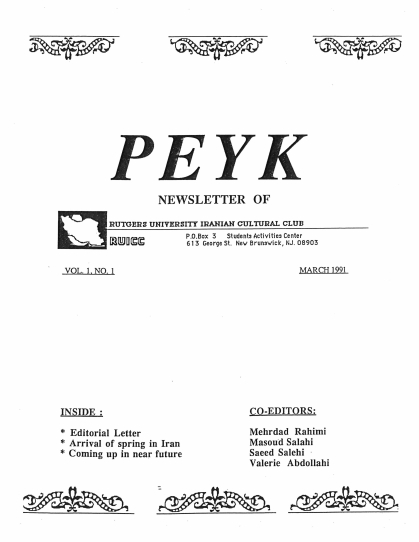
By the time that the founding members of the club graduated from Rutgers, the RUICC was in new and capable hands. It had even begun publishing a newsletter in both Farsi and English that advertised upcoming club events.
Today, the RUICC is still around today at Rutgers, over thirty years later, under the name of the Rutgers University Persian Culture Club (RUPCC). It runs larger events for Mehregan and Nowruz, as well as smaller gatherings where members can get to know each other, and is open to anyone who wants to join, whether they are Iranian, half-Iranian, or not Iranian at all.
For many members of RUPCC, the culture club still represents a space for Iranian identity and culture.
“At these events,” said Golara Hatefi, vice president of the RUPCC, “I feel closer to home, like I have something in common with all the people that I’m celebrating with. I feel like I’m connected to Iranian culture, to all these ancient rituals that have been celebrated for thousands of years before us.”
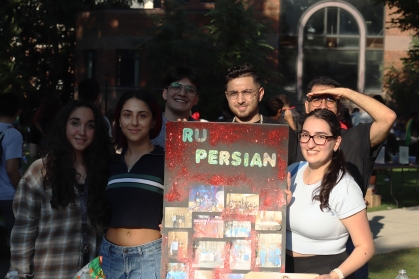
To learn more about the RUPCC and its events, visit @rupersian on Instagram.

